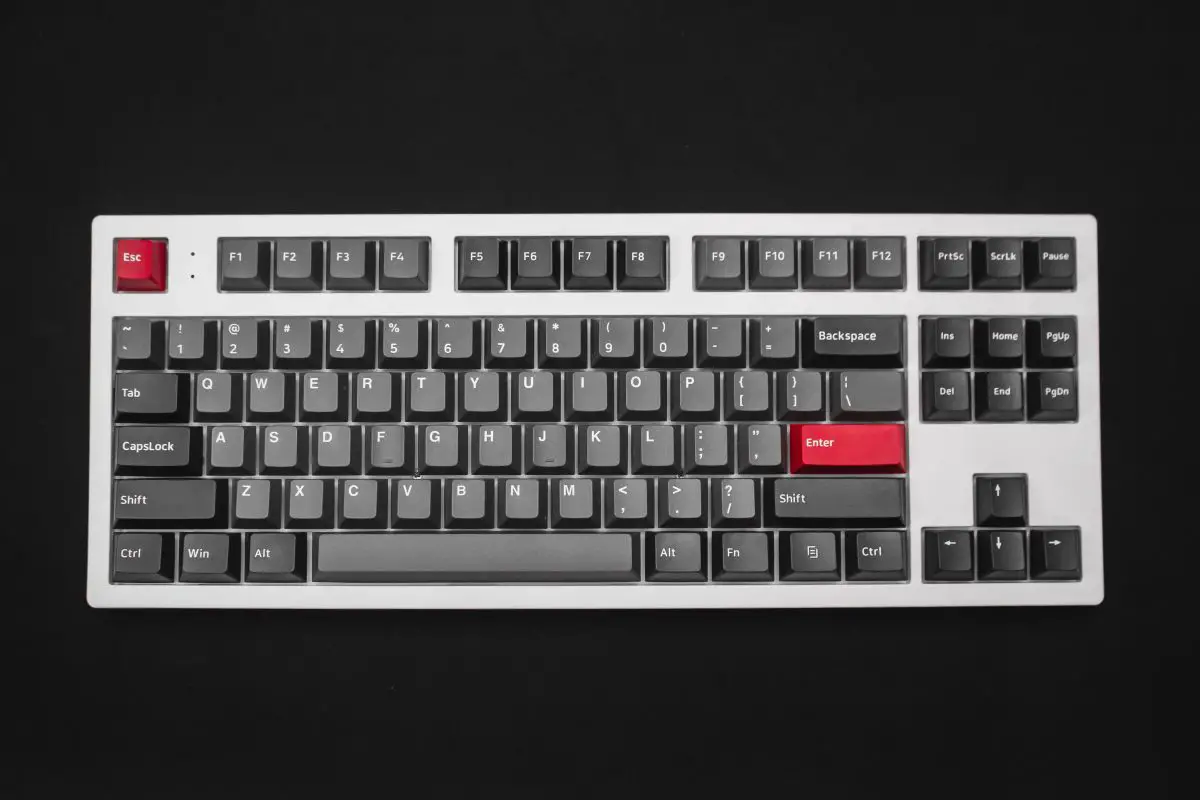Have you ever wondered why QWERTY keyboards dominate the world of typing? Why does this seemingly random arrangement of letters persist as the standard layout? In this blog post, we’ll unravel the mysteries behind the QWERTY keyboard layout and explore its significance in the modern era. Get ready to dive into the fascinating world of keyboards and discover the secrets behind our everyday typing experience.
What is the QWERTY keyboard layout? The QWERTY keyboard layout is a design for the keys on a typewriter or computer keyboard that was originally created during the era of manual typewriters. This layout gets its name from the first six letters in the top row of alphabetic keys: Q, W, E, R, T, Y.
What is the history of the QWERTY keyboard layout?
Back in the day when typewriters ruled the writing world, designers faced a peculiar challenge: the frequent jamming of typebars on paper. To tackle this issue, the ingenious QWERTY layout was born. QWERTY, named after the first six letters on the keyboard’s top row, rearranged the keys strategically. The goal? To separate commonly used letters and minimize those frustrating jams. It was like creating a catchy dance routine for your fingers on the keys, preventing them from stepping on each other’s toes.

As computers emerged, they embraced the QWERTY layout, inheriting its popularity and familiarity. Think of it as a chart-topping hit that people just couldn’t stop humming. You see, the QWERTY layout became deeply ingrained in our typing habits.
People didn’t want to let go of the familiar arrangement they had mastered on typewriters. It was like a pair of well-worn sneakers that fit just right—comfy and reliable. So, computer keyboards adopted the QWERTY layout, and its reign continued.
AKAI Professional MPK Mini MK3

AKAI Professional MPK Mini MK3
Why is the QWERTY layout popular?
One of the key reasons behind the QWERTY layout’s popularity lies in its user-friendly nature. The placement of frequently used keys is intuitive, allowing for fluid typing without much thought. It’s like finding your way around a familiar neighborhood—no GPS needed. That’s why, despite criticisms and alternative layouts, the QWERTY layout remains the go-to choice for most typists.
Whether you’re purchasing a computer, a laptop, or even a standalone keyboard, chances are you’ll find a QWERTY layout without much effort.
Another key factor is the widespread availability and relative affordability of QWERTY keyboards. Whether you’re purchasing a computer, a laptop, or even a standalone keyboard, chances are you’ll find a QWERTY layout without much effort.
How is the QWERTY keyboard layout used in the digital era?
The rise of smartphones and tablets brought forth a new era of typing through virtual QWERTY keyboards. These digital keyboards, showcased on touchscreens, have revolutionized the way we interact with our devices. No longer do we need physical keys to tap away; our fingers dance across the smooth glass, and the letters magically appear.
Virtual QWERTY keyboards offer a level of convenience that fits right into our fast-paced digital lives. They accompany us wherever we go, residing in our pockets or nestled within our bags. Need to send a quick text message while commuting? No problem! Just whip out your phone, summon the virtual keyboard, and you’re ready to tap away.
Here are a few dos and don’ts when it comes to virtual QWERTY keyboards:
| Dos | Don’ts |
|---|---|
| Familiarize yourself with the layout and features | Don’t succumb to touchscreen typos – proofread your text! |
| Take advantage of auto-correction and prediction | Avoid pounding on the virtual keys too forcefully |
| Utilize gesture typing for speedy input | Don’t forget to adjust keyboard settings for your liking |
In this digital age, virtual QWERTY keyboards offer the ultimate convenience and accessibility, allowing us to type on the go with a touch of finesse. So, embrace the dance of your fingertips across the glass, and let the virtual keyboard become an extension of your digital self!

Advantages and disadvantages of the QWERTY layout
With any technology or system, there are always pros and cons to consider. Let’s take a look at the advantages and disadvantages of the QWERTY keyboard layout:
Advantages of the QWERTY layout
- Familiarity: The QWERTY layout is deeply ingrained in our typing habits, making it easy for users to adapt and improve their typing speed.
- Widespread Availability: QWERTY keyboards are widely available and relatively inexpensive, making them accessible to a wide range of users.
- Compatible with Existing Systems: QWERTY keyboards are compatible with a vast array of devices and operating systems, ensuring seamless integration.
Disadvantages of the QWERTY layout
- Inefficiency: The QWERTY layout has been criticized for its inefficiency, as it was designed to prevent jamming on typewriters rather than optimize typing speed and finger movement.
- Lack of Ergonomics: Due to the layout’s historical design, some argue that it may not be the most ergonomic option, potentially leading to discomfort or repetitive strain injuries.
- Limited Adaptability: While alternative layouts, such as the Dvorak keyboard, have been developed for increased speed and efficiency, the QWERTY layout remains the dominant standard, limiting the widespread adoption of alternatives.
Want to learn how you can use a keyboard to type or ? Watch this video called “Making Music With My Gamer Keyboard” from the Eliminate YouTube channel.
Frequently asked questions (FAQ)
Do you still have questions about the QWERTY keyboard layout? Below are some of the most commonly asked questions.
Can I change my keyboard layout to something other than QWERTY?
Absolutely! While QWERTY is the standard layout, you can explore alternative keyboard layouts like the Dvorak keyboard if you’re looking for increased speed and efficiency. Changing your keyboard layout might require some adjustment and practice.
Are QWERTY keyboards still relevant in the era of voice controls and touchscreen devices?
Definitely! QWERTY keyboards remain widely used and easily accessible. They continue to be the go-to choice for many users. However, voice controls and virtual keyboards on touchscreens have expanded the realm of typing options, providing alternative input methods for those seeking a more intuitive experience.
Are ergonomic keyboards better than QWERTY keyboards?
Well, you can still have a QWERTY keyboard that is also Ergonomic. You don’t have to choose one or the other. In fact, most ergonomic keyboards will be QWERTY.
Conclusion
And there you have it, a glimpse into the captivating world of the QWERTY keyboard layout! From its typewriter roots to its dominance in the digital era, QWERTY has proven its staying power. So next time you tap away on your keyboard or glide across a virtual keyboard on your smartphone, remember the legacy of QWERTY and the dance of your fingertips.
Did I cover everything you wanted to know? Let me know in the comments section below. Remember, I read and reply to every comment. If you found this article helpful, share it with a friend, and check out my full blog for more tips and tricks on keyboards and beyond. Thanks for reading, keep typing, and stay tuned for more exciting topics!
Key takeaways
This article covered the ins and outs of the QWERTY keyboard layout. Here are some key takeaways:
- QWERTY keyboards originated from the need to reduce typewriter jams.
- Virtual QWERTY keyboards are widely used on touchscreen devices.
- Criticisms of QWERTY include inefficiency and lack of ergonomics.
- The QWERTY layout remains dominant due to familiarity and availability.
- Consider alternatives like the Dvorak keyboard for speed and efficiency.















